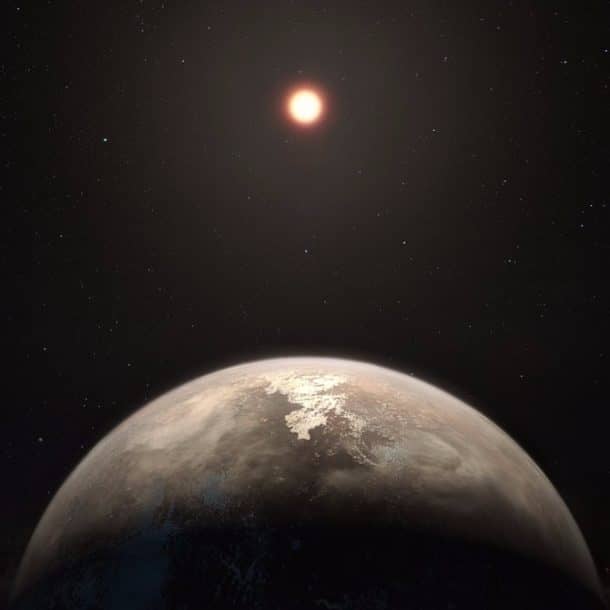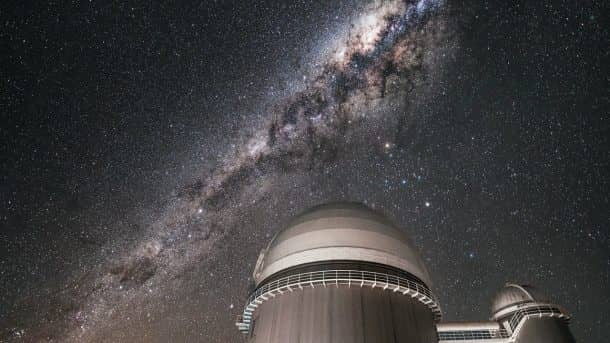An Earth-like exoplanet has been discovered by a team of astronomers and this planet, roughly the same size as ours, could be host to alien life. The planet is known as Ross 128 b. It is located 11 light years away from us and is moving towards earth and will one day become the closest exoplanet to our Sun, taking the spot from Proxima b, our current neighbor exoplanet.

Ross 128 b was discovered by researchers using the European Southern Observatory’s (ESO) High Accuracy Radial Velocity Planet Searcher (HARPS) located at the La Silla Observatory in Chile. The HARPS instrument, which is mounted aboard a 3.6-meter optical and near-infrared telescope, does not directly observe exoplanets but instead, watches for a minute wobble in the motion of a host star created by the gravitational influence of an orbiting world.
The data from HARPS is used to estimate specific characteristic of an exoplanet such as the mass of the planet, its orbital period, and its distance from the host star. “This discovery is based on more than a decade of HARPS intensive monitoring together with state-of-the-art data reduction and analysis techniques,” comments Nicola Astudillo-Defru of the University of Geneva, Switzerland, who co-authored the discovery paper. “Only HARPS has demonstrated such a precision and it remains the best planet hunter of its kind, 15 years after it began operations.”
The evidence points to this newly discovered Earth-like exoplanet and it is estimated that it orbits the red dwarf star Ross 128 at one twentieth the distance between Earth and Sun. This may seem too close for life to survive but the red dwarf star is much smaller and cooler than our Sun. This leads to Ross 128 b absorbing 1.38 times the radiation as our planet receives and gives the Earth-like exoplanet a temperature range of -60 to 20 °C.

As Ross 128 is moving towards our Sun, it will make Ross 128 b the closest exoplanet from Earth in around 79,000 years. Red dwarfs are dimmer and smaller in nature as compared to our Sun but have the ability to emit solar flares which strips the nearby planets of their atmosphere leaving them at the mercy of the radiation from the star.
Ross 128, although a red dwarf is thought to be relatively inactive and does not pose a threat to the Earth-like exoplanet. Ross 128 b orbits the habitable zone of its star (the region that allows liquid water to exist on the surface) and has a number of similarities with Earth and the scientists are scratching their heads if life can actually exist on the planet.
Astronomers and scientists are still trying their best and using the latest technology to find out if life exists on planets similar to ours. You can see how scientists discover new planets in the video below:



When I see and study the visuals off space I am empowered with a thought that undermines the real and the imaginary. The two that are suitable for my understanding is matter and energy and I have created a logical understanding for them. Insisting that understanding, which is deeper than knowledge? There are many imaginations of earth like objects that the science world is dreaming off and my argument stands to disproof the comparison.
There are five fields that govern the cosmic existence. The space houses matter and energy evolving in a time variant configuration with consciousness giving it orderliness. It is customary for the scientist to make the earth as a reference. In the cosmos the earth is a speck of dust unaccountable in the existence of the cosmos. Matter and energy is evaluated with the principles of classical physics and it’s lately described in quantum physics. There is a void in science that needs another dimension to evaluate the realities of the cosmos. I propose the theory of consciousness which should be one theory for all with the following boundaries. ( if you are interested I can continue)